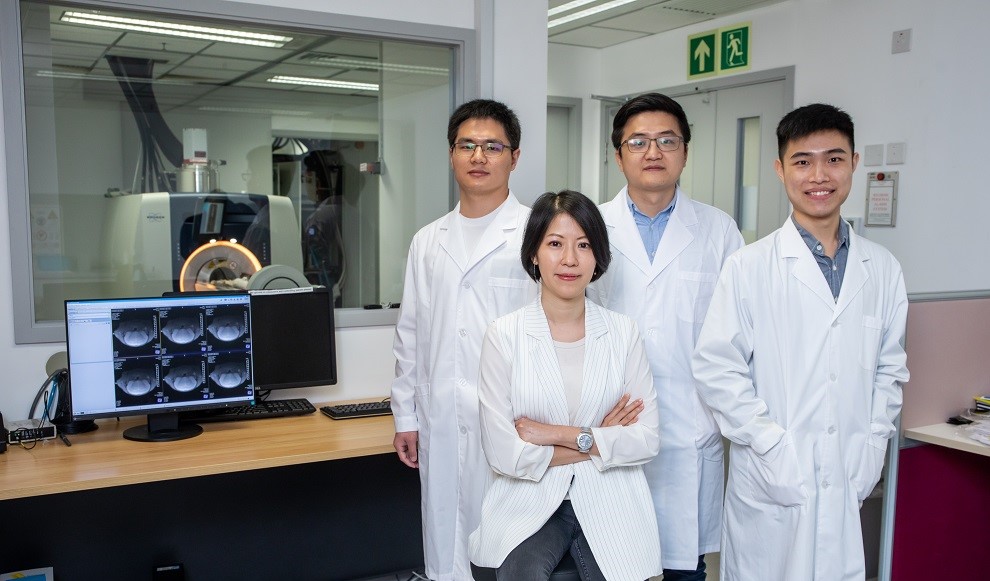New MRI Approach for Earlier Detection of Alzheimer’s Disease
Collaborative research by CityU and Johns Hopkins University has developed a new, non-invasive way to identify Alzheimer’s disease even before any symptoms appear.
Dr Kannie Chan Wai-yan, Associate Professor in the Department of Biomedical Engineering (BME) at CityU, and her team collaborated with scientists from the US, Sweden and Hong Kong in pioneering this pre-clinical study. They developed a molecular imaging approach, based on Magnetic Resonance Imaging (MRI), to dynamically measure glucose level changes in the brain’s lymphatic system, which can provide early cues about the disease. Their findings were published in the scientific journal Science Advances in May, 2020.

“The tricky part of fighting Alzheimer’s disease is that early symptoms, such as the emergence of protein plaques in the human brain, which hamper the cognitive function, are similar to normal ageing,” said Dr Chan. “Even more challenging, patients diagnosed with symptoms are most likely in the middle or late stage of the disease. Overlooked pathologies in the brain could have happened 15 or 20 years before the symptoms appear.”
Dr Chan’s team’s new imaging approach can assess glucose uptake and clearance in the lymphatic system of the brains of mice in a non-invasive way. “By using glucose as a natural ‘tracer’, our imaging method can sensitively detect the distinctive changes in the lymphatic system function at the molecular level at the early stage of Alzheimer’s disease, helping us to differentiate it from normal ageing,” she said.
The new imaging approach is compatible with the MRI machines commonly used in clinics and hospitals, which means low set-up cost and technically easy transfer to clinical applications. Dr Chan anticipates that clinical trials can be conducted within three years.
This research article originated from CityU RESEARCH.